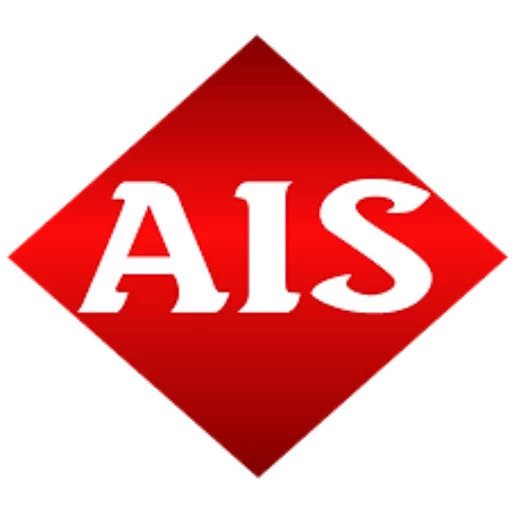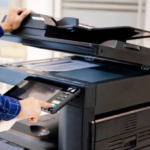From Paper to Pixels: Mastering Document Scanning and Archiving
Digitization – A Gateway to Advanced Document Management
Document scanning and archiving opens the door to a future where documents aren’t just securely preserved but also incredibly easy to access. This change is vital for office managers struggling with piles of paperwork and clunky filing systems. Imagine converting all those papers into digital versions—saving both space and time.
- Digitization: The process of converting paper documents into digital files. This step is crucial for creating a sustainable and efficient office environment.
- Preservation: Safeguard critical documents from damage due to natural elements or mishandling, ensuring longevity without occupying physical space.
- Accessibility: Digitized archives mean instant access to your documents from anywhere. This is a game-changer for teams who need quick information access without wading through physical files.
One satisfied customer mentions, “This is a HUGE time and space-saver for our office. We can now search for documents digitally, and I now have room for storage!”
Whether it’s backing up crucial data or simply streamlining how you find information, moving from paper to pixels is a significant leap forward. Not convinced yet? Check out the infographic below to see just how practical and impactful this transition can be!

Common Document scanning and archiving vocab:
Understanding Document Scanning and Archiving
Archival scanning is the process of converting paper documents into digital files, ensuring that valuable information is preserved for the long term. This method is essential for documents with historical, legal, or cultural significance. Specialized equipment is used to maintain the integrity and quality of the originals, which is crucial when dealing with fragile or delicate materials.

Digital storage plays a vital role in document management. Once documents are scanned, they are stored digitally, making them easily retrievable and shareable. This eliminates the need for bulky filing cabinets and reduces the risk of losing important documents to physical damage. With digital storage, you can organize files in a structured manner, making it much easier to locate specific documents when needed.
Document management systems streamline the way businesses handle their information. With digital archives, you can implement advanced search functions, categorize documents, and even set permissions for who can access certain files. This not only improves efficiency but also improves security by protecting sensitive information from unauthorized access.
Archival scanning, combined with digital storage and effective document management, transforms how businesses operate. It reduces physical clutter, improves accessibility, and protects valuable information for future use. This approach is not just about preserving the past; it’s about preparing for a more efficient and organized future.

By understanding these core elements, businesses can better steer the transition from paper to pixels, ensuring that they make the most of their digital archives. This is not just a technological upgrade; it’s a strategic move towards better information management and operational efficiency.
Benefits of Document Scanning and Archiving
Cost Reduction
Storing physical documents is expensive. Think about all the costs: renting storage space, maintaining climate control, and even just buying filing cabinets. By switching to document scanning and archiving, these costs shrink. Digital documents don’t take up physical space, and you don’t have to worry about paper getting damaged or lost.
Improved Searchability
Imagine needing to find one piece of paper in a mountain of files. It can take hours! With digital archives, you can find what you need in seconds. Advanced search functions let you type in a keyword and instantly pull up all related documents. This speed saves time and makes it easier for everyone to get the information they need, when they need it.
Disaster Recovery
Natural disasters can destroy paper documents forever. Fires, floods, or earthquakes don’t stand a chance against digital files. Document scanning and archiving means your important information is safe, backed up, and easily recoverable. Digital copies ensure that even if something happens to the physical originals, the information isn’t lost. This peace of mind is invaluable for any business.
By embracing these benefits, companies can improve efficiency, cut costs, and safeguard their valuable information. This isn’t just about going digital—it’s about making smart, strategic choices for the future.
Best Practices for Document Scanning
When it comes to document scanning and archiving, following best practices ensures you get the most out of your digitization efforts. Let’s explore some essential strategies.
Planning
Before you start scanning, take time to plan. Decide which documents are most important and prioritize them. Create a naming system for your files. This will help you find documents later. Also, think about where you’ll store the digital files. Will it be on a local server or in the cloud? Planning these details ahead of time can save a lot of headaches.
Specialized Equipment
Using the right equipment is key. Not all scanners are created equal. For fragile documents, a flatbed scanner is ideal because it doesn’t bend the paper. If you’re scanning lots of documents, look for a scanner with an automatic document feeder (ADF). This feature can speed up the process by handling multiple pages at once.
For text documents, OCR (Optical Character Recognition) technology is a must. OCR turns scanned images into searchable text. This makes it easier to find specific information later. Some scanners come with built-in OCR, while others require separate software.
Quality Control
Quality control is crucial. After scanning, check the digital files to make sure they are clear and complete. Look for missing pages or blurry text. It’s easier to fix problems now than to rescan everything later.
Create a checklist to ensure every document is scanned to the highest standard. This might include checking the file name, ensuring the document is legible, and verifying that all pages are included. Regularly review your scanning process to find areas for improvement.
By following these best practices, you’ll ensure your document scanning and archiving project runs smoothly and efficiently. This sets you up for success, making your digital archives a reliable resource for years to come.
Next, we’ll explore the technologies that make document scanning possible, from flatbed scanners to advanced OCR software.
Technologies Used in Document Scanning
In document scanning and archiving, technology plays a crucial role in changing paper documents into digital formats. Let’s explore some of the key technologies that make this possible.
Flatbed Scanners
Flatbed scanners are like the Swiss Army knife of scanning tools. They are perfect for delicate documents, photos, and even small objects. The document lies flat on a glass surface, and the scanner captures an image without bending or damaging the paper. This is especially important for historical documents that might be fragile or brittle.
Flatbed scanners offer high-resolution scans, which means you get clear and detailed digital images. This makes them a top choice for preserving documents with historical value.
Optical Character Recognition (OCR)
OCR, or Optical Character Recognition, is a game-changer for making scanned documents useful. After scanning, OCR software reads the text in the image and converts it into machine-readable text. This means you can search for specific words or phrases within your digital documents.
Advanced OCR technology can even handle multiple languages and different fonts. Some systems are sophisticated enough to recognize handwritten text, though accuracy can vary. With OCR, finding information in your digital archives becomes as easy as typing a keyword into a search bar.
Image Improvement
Sometimes, scanned images need a little touch-up to be more readable or visually appealing. Image improvement tools can help. They can improve legibility by adjusting brightness, contrast, and color balance. These tools can also remove stains or correct fading, all while maintaining the authenticity of the original document.
However, it’s important to strike a balance. The goal is to make the document readable without altering its original content. In some cases, especially with archival documents, it might be best to avoid any improvement to preserve the document’s original state.
These technologies—flatbed scanners, OCR, and image improvement—are essential for successful document scanning and archiving. They ensure that digital versions of documents are accurate, accessible, and easy to manage.
Next, we’ll tackle some frequently asked questions about the document scanning and archiving process.
Frequently Asked Questions about Document Scanning and Archiving
What is archival scanning?
Archival scanning is the process of converting valuable paper documents into digital formats to preserve them for the long term. This is essential for documents with historical, cultural, legal, or research significance. Using specialized equipment, archival scanning ensures that digital copies maintain the integrity and quality of the originals.
The goal is to create digital versions that can withstand the test of time, even as the physical documents deteriorate due to factors like sunlight or moisture. These digital copies are stored securely and can be easily accessed by anyone who needs them, without risking damage to the original documents.
What is the best way to scan and save documents?
The best way to scan and save documents depends on your needs and resources. For those who prioritize quality, using a flatbed scanner is ideal. It provides high-resolution scans that capture fine details, making it perfect for important or fragile documents.
For convenience and mobility, mobile scanning apps like Adobe Scan offer a great alternative. These apps allow you to quickly capture documents using your smartphone camera. They often come with features like automatic cropping and text recognition, making it easy to convert photos into searchable PDFs.
When saving documents, consider using formats like TIFF for long-term storage, as it’s a lossless format that preserves image quality. For everyday use, PDF is versatile and widely supported, making it a practical choice for sharing and viewing documents.
What is the process of document archiving?
The process of document archiving involves several important steps to ensure that your documents are preserved and accessible:
- Planning: Start by identifying which documents need to be archived and how they will be organized. Decide on naming conventions, storage locations, and access permissions.
- Purging: Before scanning, it’s a good idea to go through your documents and remove any that are no longer needed. This reduces clutter and saves time during the scanning process.
- Scanning: Use the appropriate scanning technology to convert your documents into digital formats. For high-quality results, use a flatbed scanner or a professional scanning service.
- Quality Control: After scanning, review the digital files to ensure they are clear and complete. Make any necessary adjustments using image improvement tools.
- Storage: Save the digital files in a secure location, such as a cloud storage service or a dedicated server. Consider redundancy by storing copies in multiple locations to prevent data loss.
By following these steps, you can effectively manage and preserve your documents, ensuring they remain accessible and protected for years to come.
Conclusion
At Associated Imaging Solutions, we’re passionate about helping businesses transition from paper to pixels. We understand that every organization has unique needs, and that’s why we offer personalized service custom to each client. Our team is committed to providing the best solutions for your document scanning and archiving needs.
Our approach combines local expertise with global standards, ensuring you receive top-notch service and advanced technology. Whether you’re looking to reduce costs, improve searchability, or improve disaster recovery, our solutions are designed to meet your objectives.
We leverage cutting-edge technology to turn your paper documents into digital assets. From high-quality flatbed scanners to sophisticated OCR software, our tools ensure that every detail is captured accurately. This not only preserves the integrity of your documents but also makes them easily accessible and searchable.
Partnering with us means gaining a reliable ally in your digital change journey. We’re here to support you every step of the way, from planning to execution and beyond. Our goal is to help you streamline your operations, free up valuable space, and make information management more efficient.
Ready to transform your document management process? Explore our services and see how we can help your business thrive in the digital age.











